Brooklyn design firm Isometric Studio has devised a set of guidelines to help museums reopen safely following coronavirus, including adding signage to encourage social distancing and using masks as entry tickets.
Toolkit for Museum Reopening: Design Strategies and Considerations outlines design strategies museums can use to prevent the spread of infection.
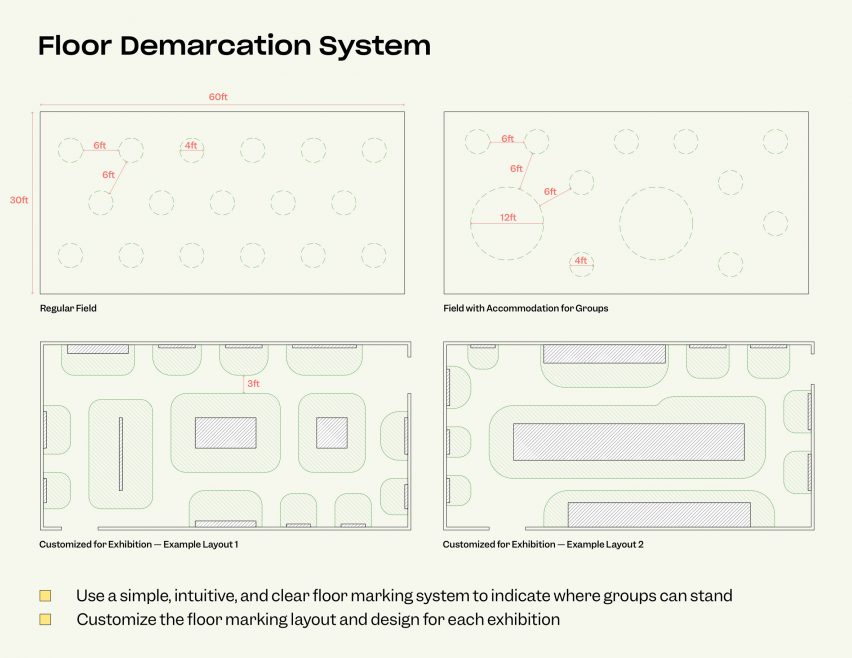
“Audiences are seeking constructive ways to participate in the ongoing fight for justice,” Isometric Studio said. “Museums have the unique capability to help us learn from history, make sense of these troubled times, and cultivate new language and iconography to imagine and build a more just world.”
“We hope that the design strategies offered in this toolkit can serve as a foundation for museums to continue to fulfil this critical mission,” it added.
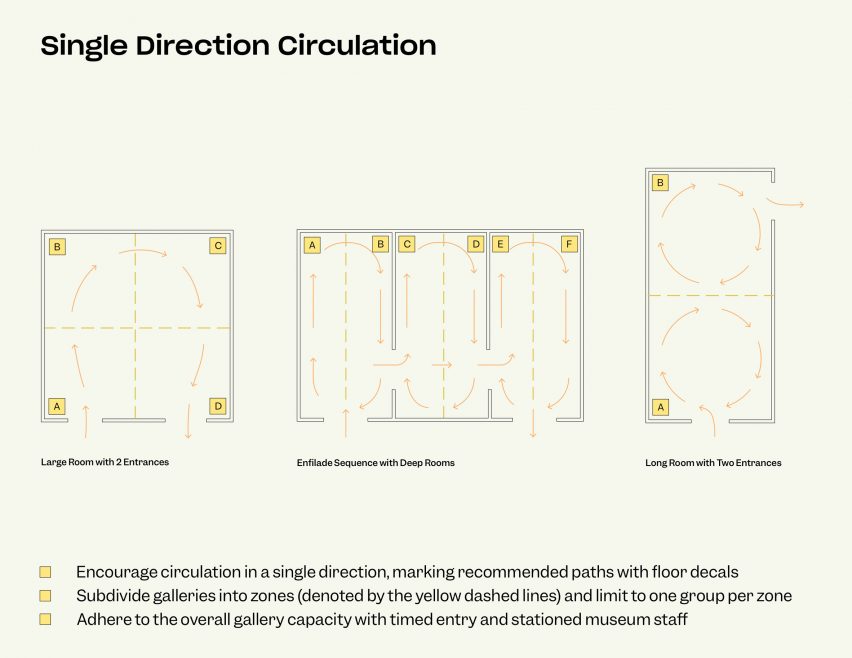
It includes visual diagrams to show how indoor galleries, outdoor exhibitions and virtual showcases can be redesigned and adapted to follow current health protocols.
Recommendations include setting up hand sanitiser stations throughout the museum lobby and galleries and display notices explaining surfaces are regularly cleaned.
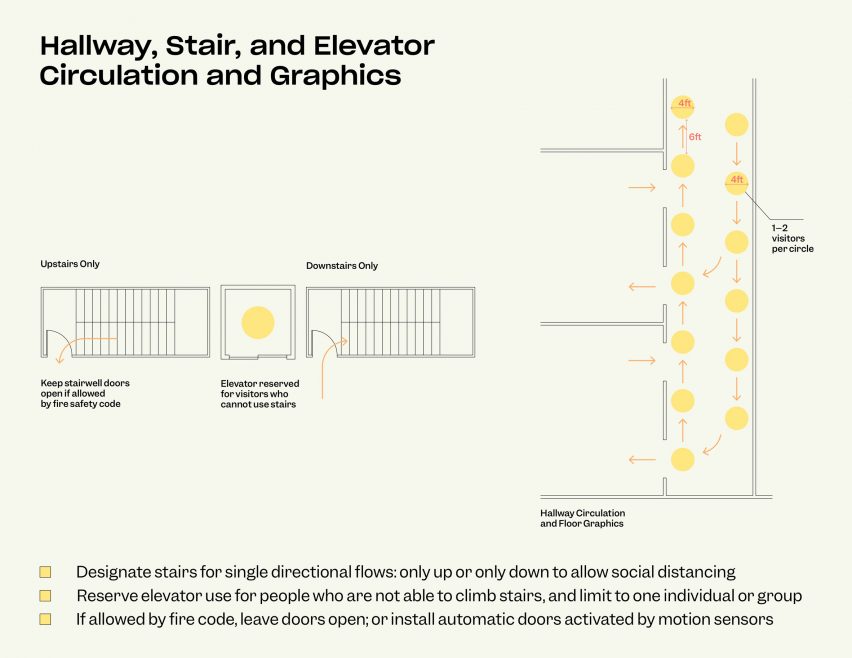
At ticketing and information desks, the studio recommends installing protective barriers to separate staff and patrons. It also suggests replacing paper tickets with face masks to encourage safe practices among all visitors.
For indoor exhibitions, it advises museums limit the number of patrons that can enter a single gallery or exhibition space at a time. This can be regulated with timed entry ticketing and designated zones that keep visitors six-feet (two metres) apart.
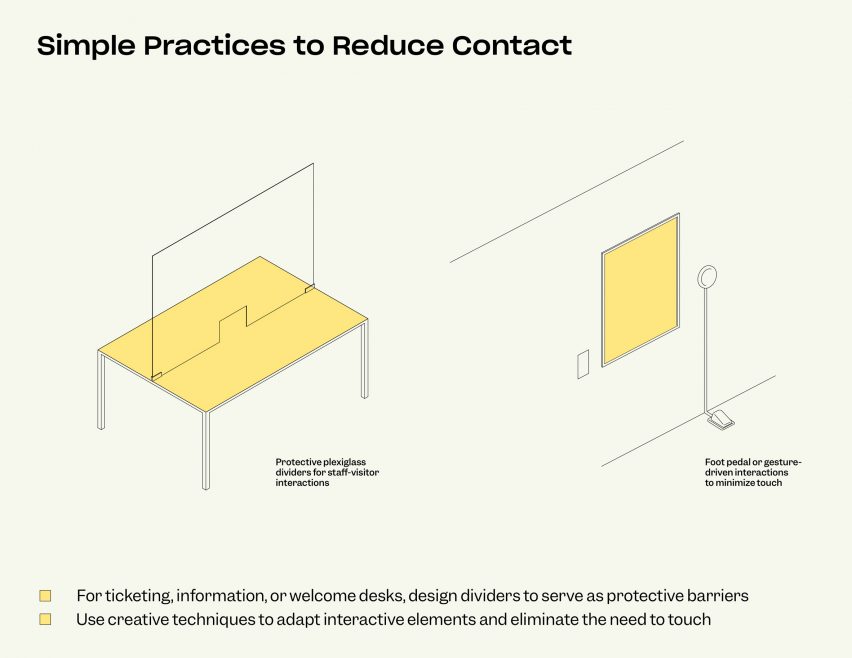
Arrows could be added to the floors and hallways to direct visitors through the space to encourage orderly circulation. Closing off or opening up some entrances and doorways is another method for promoting clear directional flow.
Isometric Studio’s toolkit comes as a number of museums and cultural centres are planning to reopen as coronavirus lockdown measures in some countries begin to ease. Museums in New York City, which were shut in early March, are scheduled to reopen on 3 August as part of the Phase 4 reopening.
Lisbon’s Museum of Art, Architecture and Technology reopened last month, with a series of 3D signs to encourage visitors to practice social distancing.
Created by designed Sam Baron, the signage was made of bricks, tape and mirrors and intended to welcome visitors back and not scare them. “We believe that to create signage for Covid, which has been in the mind of all of us for months, it was smart to give a more human-based flavour to this project,” Baron said.
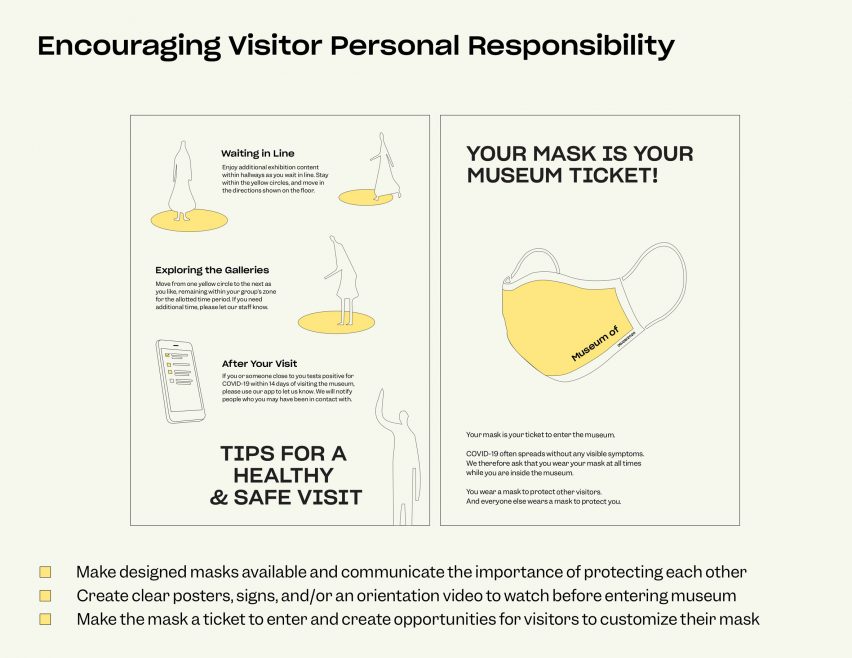
Isometric Studio also suggests museums install additional ventilation and UV light filters which would purify the air in the enclosed galleries, as research has found that virus droplets can spread through HVAC systems.
One of the illustrated diagrams shows how one device an Air Rover connects to ductwork to intake contaminated air and emit purified air. This setup is designed to filter spaces up to 7,200 square feet (668.9 square metres).
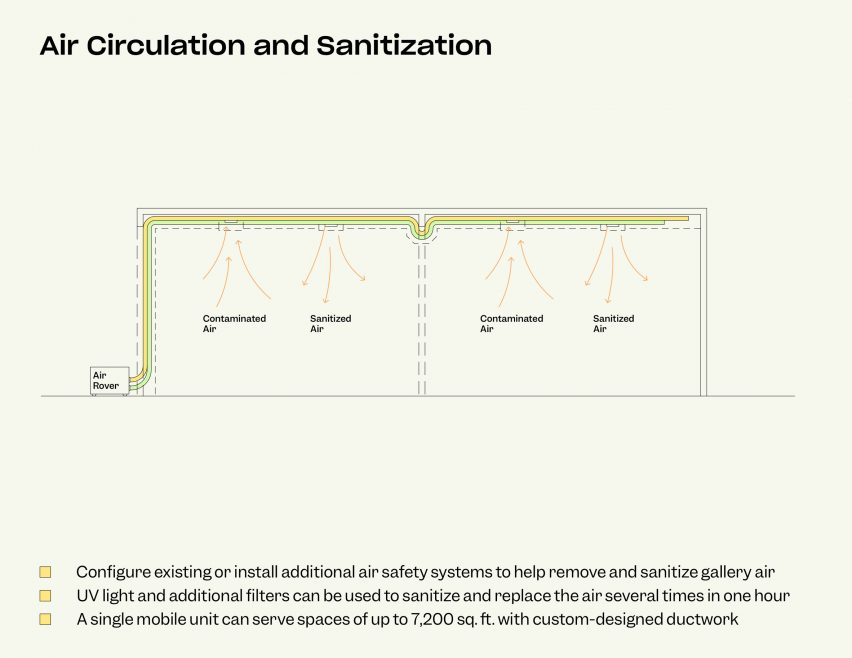
The proposal for outdoor spaces, meanwhile, recognises it can be difficult to direct groups of people since people are more likely to wander in open areas.
To control the flow of visitors moving through outside exhibitions, museums can implement a timed entry system, display exhibit labels with large text and imagery that can be viewed from a distance and use easy-to-assemble stands and furniture.
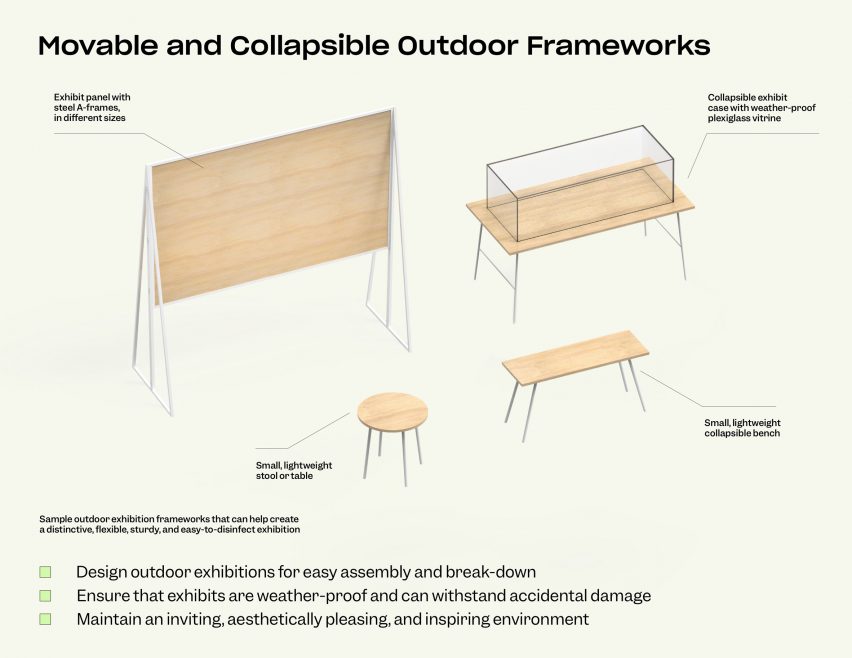
In addition to physical exhibitions Isometric Studio also devised plans for creating digital museum experiences to increase its audience and accessibility.
“By designing an online experience, museums can make an impact beyond their walls,” the studio said.
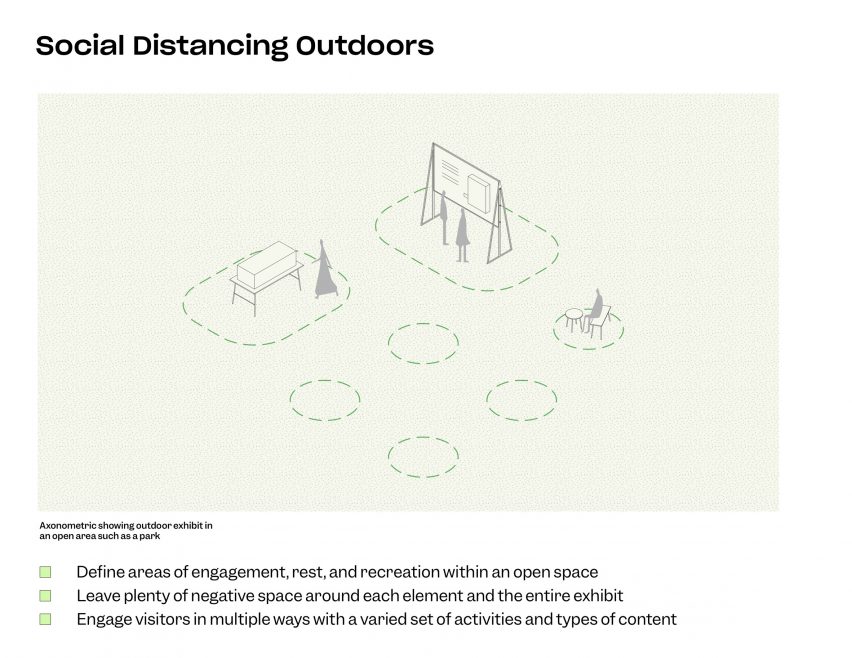
“Online exhibitions allow museums to reach broader audiences, increase access for those who cannot visit in-person, and continue to connect meaningfully with their communities.”
These suggestions include virtual experiences designed to mimic physical exhibitions, multimedia video tours of galleries and objects, as well as simpler initiatives such as hosting virtual talks, engaging with social media and operating an online store.
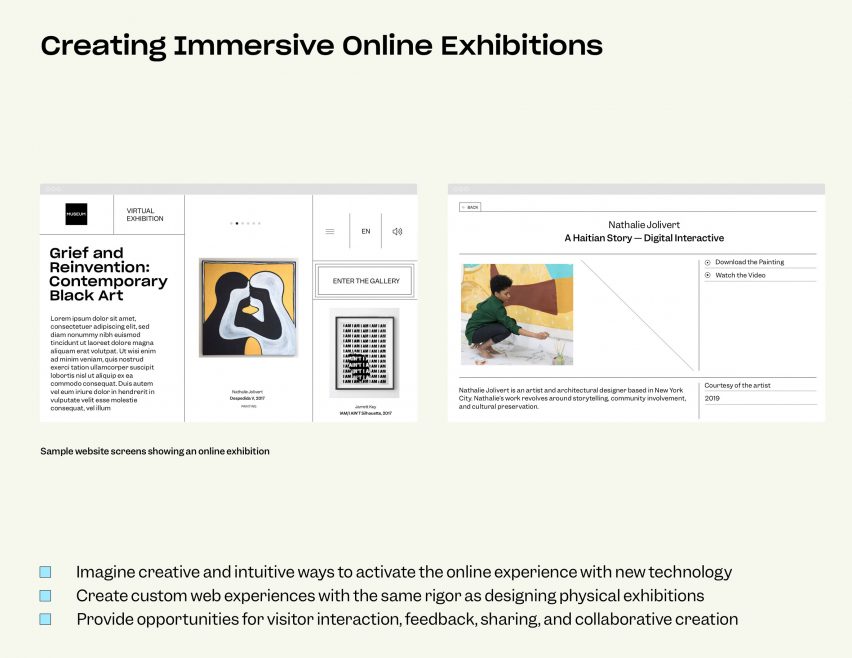
A number of designers and architects have published strategies to help open a range of facilities, like offices and restaurants, following the pandemic.
Examples include a scheme by Perkins and Will that suggests offices will be made to balance physical and virtual work and a plan by MASS Design Group that recommends restaurants remove bar seating.
Source: Rooms - dezeen.com


